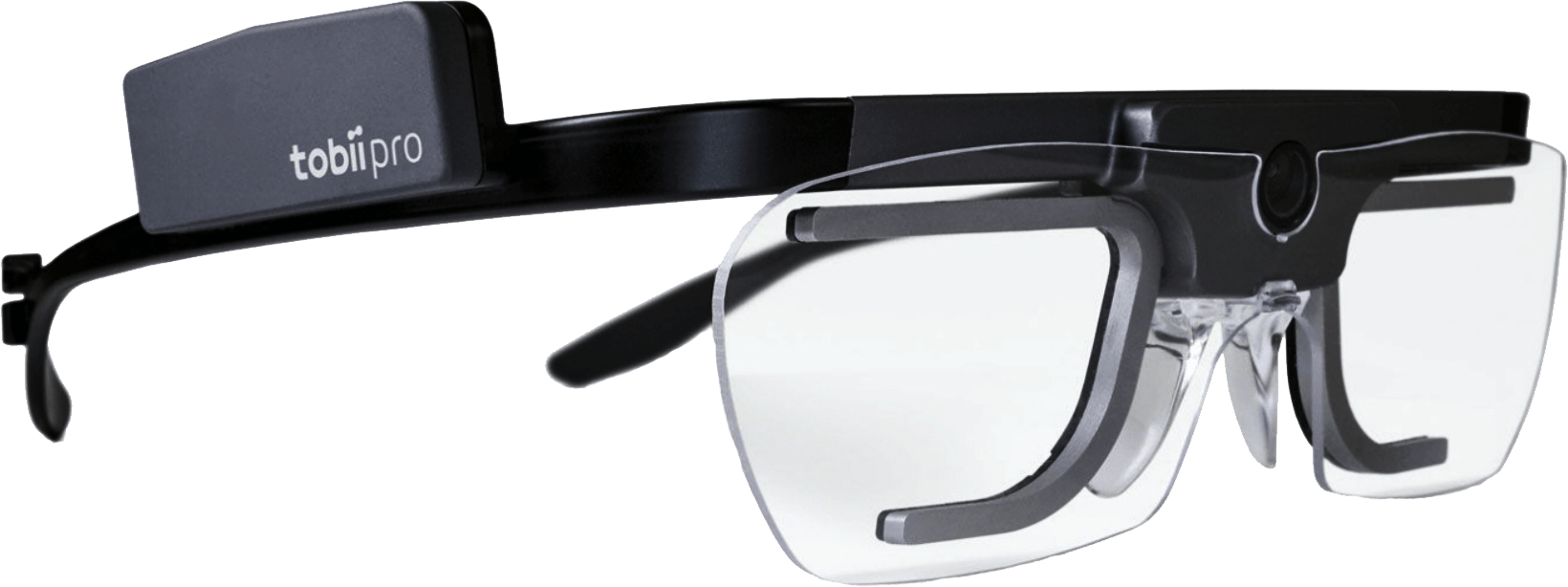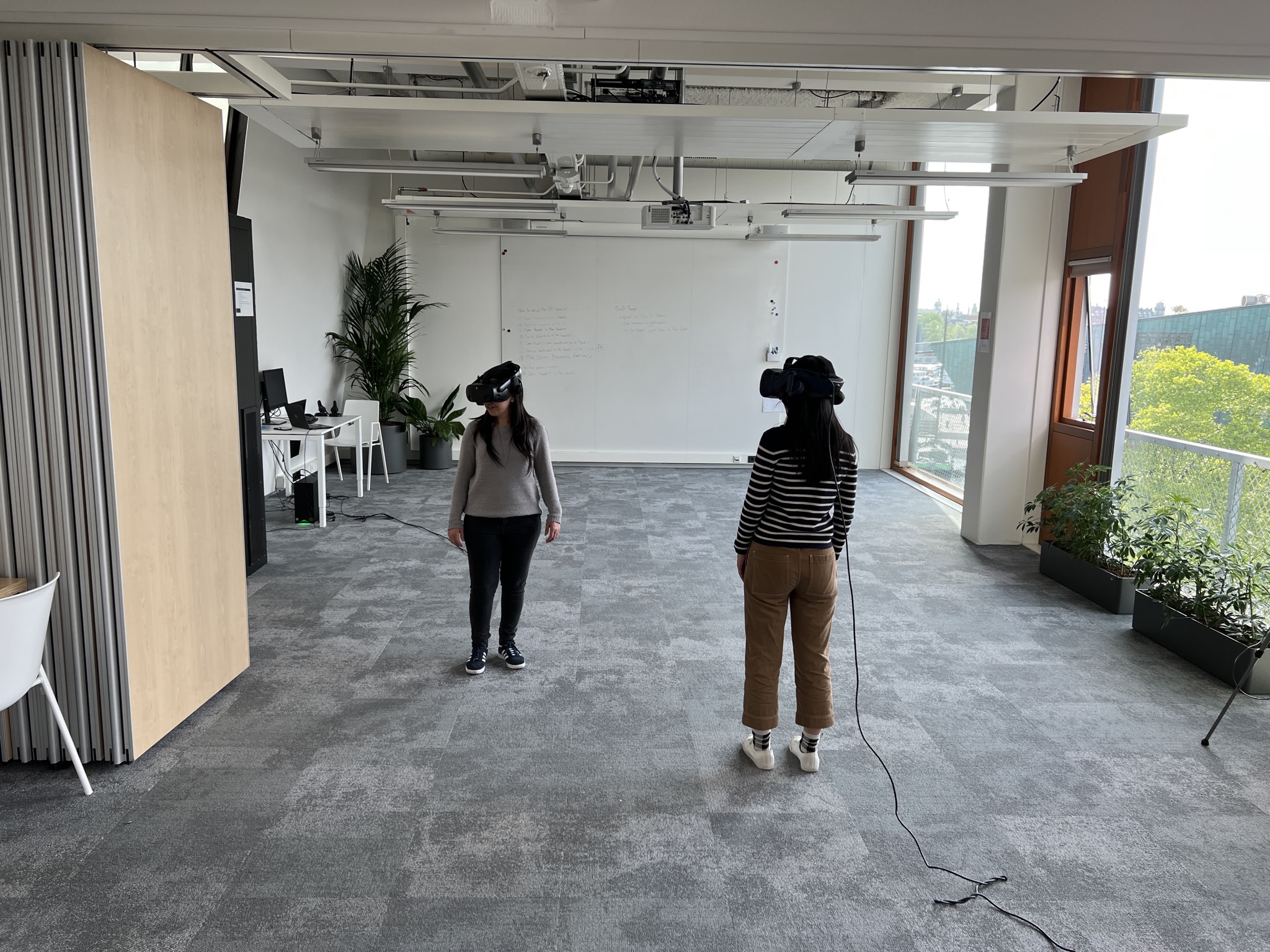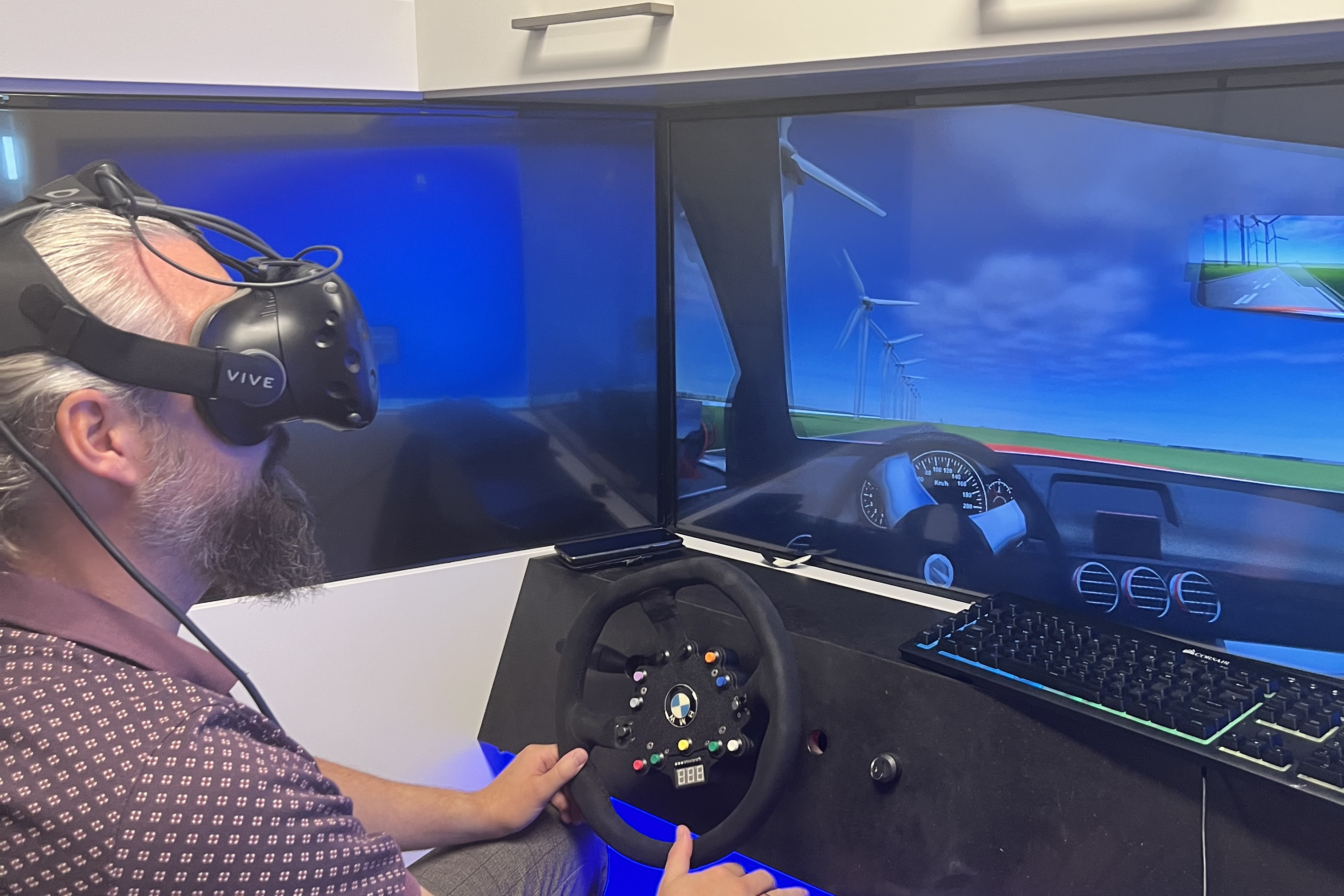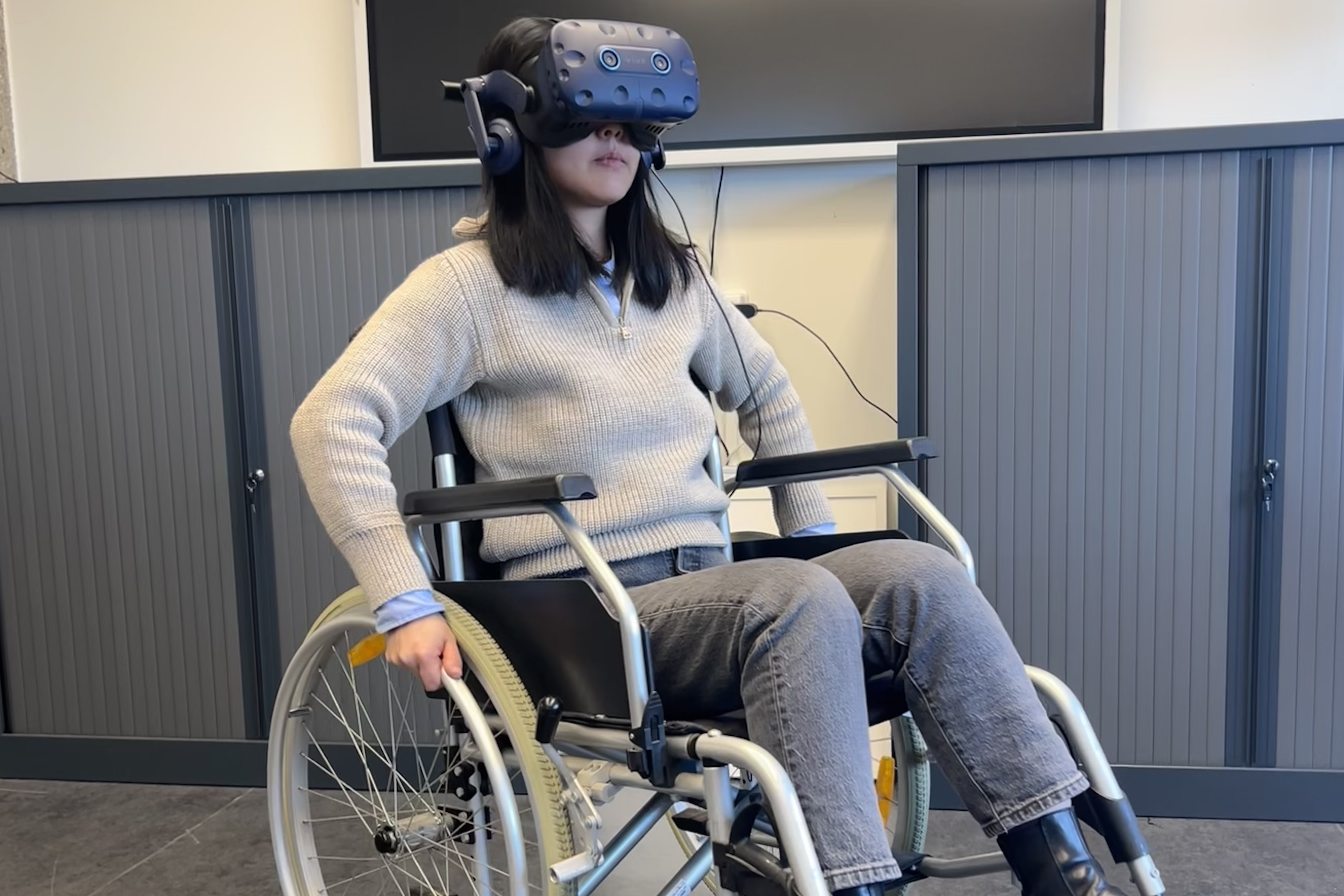



Primary XR headsets that are used in MXR Lab include VR headsets (HTC Vive Pro Eye, Oculus Quest 2), AR headsets (Microsoft HoloLens), and MR headsets (Varjo XR-3). These XR headsets provide users with a high-quality and different levels of immersive virtual experience, allowing them to explore and interact with a range of virtual environments.
In addition to the headsets, MXR lab also equips physiological and motion-tracking sensors that can monitor users' physiological responses, such as heart rate, skin conductance, and eye movement.
To create and edit high-quality virtual environments, MXR lab also equips advanced graphics workstations with powerful processors and graphics cards. These workstations also equip specialized software tools for 3D modeling and XR application development, including Maya, Revit , Unreal, and Unity.

Within the lab, a wide range of VR simulators have been developed, each focusing on a specific aspect of human mobility behavior. These simulators include a pedestrian simulator, cyclist simulator, driving simulator, and wheelchair simulator.
Pedestrian Simulator
One of the available simulators is the pedestrian simulator, designed to simulate the experience of one or multiple pedestrians walking or navigating through diverse virtual environments, such as buildings, virtual cities, or urban landscapes. is used for st udying pedestrian wayfinding behavior and road-crossing behavior.
Cyclist Simulator
The cyclist simulator replicates the experience of riding a bicycle in virtual environments. It is designed to investigate and analyze cyclist behavior in different traffic scenarios. This simulator enables users to cycle through diverse landscapes, such as city streets, countryside roads, or off-road trails. By creating a realistic and immersive virtual environment, the simulator will provide a safe and controlled setting to study the decision-making processes and responses of cyclists in various traffic situations.
Driving Simulator
The immersive VR driving simulator is being developed in the MXR lab, aiming to offer users a highly realistic and immersive experience of driving in virtual environments. With its ability to simulate diverse driving scenarios, the simulator provides a safe and controll ed environment for researchers to study driver behavior and interactions between vulnerable road users and vehicles.
Wheelchair Simulator
The MXR lab also offers a wheelchair simulator, which provides individuals with an immersive experience of navigating their surroundings using a wheelchair. This simulator can simulate different terrains and environments, helping researchers understand the interaction between pedestrians with reduced mobility, especially those in wheelchairs, and existing and future road scenarios. It also assists in designing accessible spaces and evaluating the usability of public infrastructure for wheelchair users.




